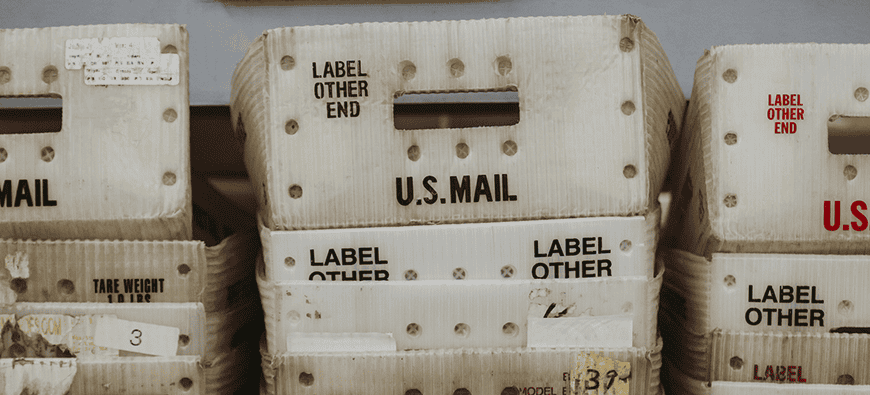
Banks Can’t Keep Playing Defense on Postal Banking
Brought to you by Promontory Interfinancial Network

As momentum builds for offering expanded financial services via the U.S. Postal Service, the banking industry to date has responded with flat opposition.
Banks argue that the post office isn’t set up to take deposits, workers don’t have much experience offering financial services products and the agency has enough issues it needs to address already – all solid points. Yet while playing defense may work in the short term – even if Democrats win the White House and Senate in November, it would be a tough fight on the Hill to enact a postal banking bill – it doesn’t feel like the smart play.
There is an opportunity in postal banking, one that the industry would do well to seize before banks competitors do. Credit unions are already circulating a plan that would allow them to bid to open branches at nearby post office locations. JPMorgan Chase & Co., meanwhile, has been quietly negotiating with the U.S. government about putting ATMs at post office locations.
If both smaller institutions like credit unions and JPMorgan, the nation’s largest bank, see the possibilities in post offices, banks should too.
The push for postal banking is only going to increase
Banks may not agree, but on some level, offering banking services at post offices makes sense. Many foreign countries already do it successfully and the U.S. itself offered them from 1911 to 1966 (It largely ended because banks could offer higher interest rates). A growing number of progressives see postal banking as a potential solution to the roughly 55 million un- and underbanked Americans. The Postal Service is both popular and trusted, making it an attractive alternative to check cashers, payday lenders and yes, even banks.
Many Democrats have embraced the idea, including Sens. Elizabeth Warren, D-Mass., and Kirsten Gillibrand, D-N.Y. Sen. Sherrod Brown, the top Democrat on the Senate Banking Committee has his own version of postal banking that involves the Federal Reserve and the creation of digital currency. Even the campaign for Democratic presidential candidate Joe Biden has endorsed postal banking.
Those ranks are only likely to increase as economic disparities in the country sharpen. And while Democrats may not have the votes right now, that could change if they eliminate the filibuster or as Americans look for more help during the economic fallout of Covid-19.
Post offices are just about everywhere – including places banks aren’t
Despite budget cuts, there are more than 31,000 post offices in the U.S. To put that in perspective, Wells Fargo & Co. currently has the largest branch network in the country, with nearly 5,500 branches. As of 2019, there were about 77,500 bank branches in the U.S. overall.
But consumers can ignore bank branches, especially when they don’t have an account. Branches are also absent in so-called “banking deserts” that lack a significant financial institution presence. By their nature, post offices are geographically diverse, close to most communities and likely to have a lot of foot traffic.
If the government offered expanded banking services in all 31,000 USPS locations, it’s easy to see why banks view that as a huge threat. But if community bankers could compete for the right to open a branch or put an ATM inside their local post office – similar to how many already do in Walmart stores – it becomes a chance to expand their customer base.
To be sure, any bidding or proposal process would have to be open and balanced, designed to ensure big institutions like JPMorgan couldn’t muscle out community banks. But if bankers develop their own plan, they could make sure such a process is part of any final deal.
Banks can solve some postal banking problems
Bankers are right to note the many practical difficulties if the Postal Service gets involved in the financial services space. Personnel aren’t trained and already face a crush of duties. It’s not even clear postal banking would bring in the profits that its supporters hope for, precisely because they would be limited in what services could be offered and fees charged.
But adding a bank to the equation could help address at least some of these issues. There’s no need to train additional personnel since bank staff would be on hand. Banks also have experience in offering low-cost services and could be explicitly encouraged to do so by federal regulators. In short, it could become a win-win, where banks and post offices work hand in hand to help serve low- and moderate- income consumers.
Whether bankers embrace this idea or come up with their own, they would do well to join the debate. Either they help steer the outcome to a solution they can support – or run the risk of watching a big bank, credit union or the federal government gets there first.


